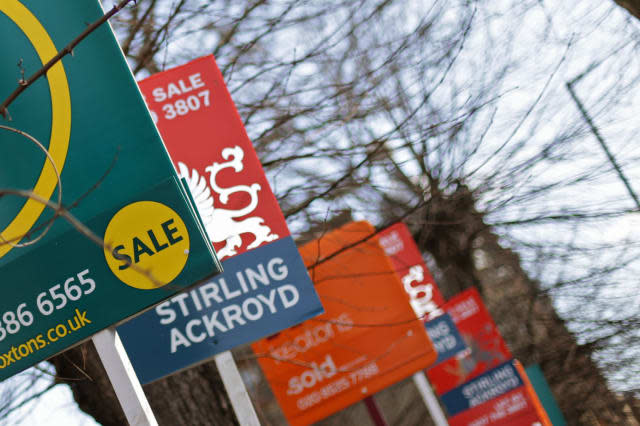House prices soar in Labour seats

The steepest house price rises of the past 20 years have taken place in constituencies mostly held by the Labour Party, new figures show.
Of the 50 parliamentary seats that have seen the highest percentage rise in property prices since 1995, roughly two-thirds (33) were won by Labour at the general election.
Just 16 of the 50 were won by the Conservatives, but these include the constituency with the biggest increase of any seat in England and Wales - Kensington in London, where prices have gone up by 550%. The average house price in Kensington in 2014 was £1,150,000, according to data released by the Office for National Statistics.
The only seat in the top 50 not held by Labour or the Tories is Brighton Pavilion, which was won by Caroline Lucas for the Green Party, and where property prices have gone up by 449%.
London was one of the few areas of the country where Labour made gains at the general election, and this is reflected in the party's dominance of the top 50 seats with the biggest rise in house prices, 30 of which are Labour-held constituencies in the capital.
The Labour seat where prices have increased the most in the past 20 years is Tooting, whose MP, Sadik Khan, is standing in the contest to be Labour's candidate in the 2016 London mayoral election. The average cost of a house in Tooting in 2014 was £497,750, an increase of 515% since 1995.
Housing was a prominent issue in the general election campaign, with former Labour leader Ed Miliband proposing a mansion tax on properties valued at more than £2 million - a plan that was criticised by some London-based Labour MPs, including Tessa Jowell, Diane Abbott and David Lammy, all of whom are candidates in the Labour mayoral contest.
Of the 50 parliamentary seats that have seen the smallest percentage rise in property prices over the past 20 years, 44 are currently held by Labour and six by the Conservatives.
Compare mortgage rates
The constituency with the lowest rise in England and Wales is Bradford West, where prices have gone up by 116% since 1995. This seat was won by Labour at the general election from George Galloway of the Respect party.
In every seat in England and Wales, house prices have at least doubled in the past two decades.
Prices in Witney, Oxfordshire, the seat of Prime Minister David Cameron, have gone up by 265%, while those in Tatton, the constituency of Chancellor George Osborne, have risen by 225%.
This compares with a rise of 192% in Doncaster North, the seat held by Mr Miliband.
But prices in Camberwell & Peckham, the seat of acting Labour leader Harriet Harman, have soared by 390%: the 28th highest rise in England and Wales.
In Sheffield Hallam, the constituency of former Liberal Democrat leader Nick Clegg, house prices have gone up by 302% since 1995.
Here are the five biggest rises:
(Figure is median sale price in 2014)
1. Kensington: £1,150,000 (plus 550%); Conservative
2. Cities of London & Westminster: £980,000 (plus 536%); Conservative
3. Tooting: £497,750 (plus 515%); Labour
4. Westminster North: £700,000 (plus 509%); Labour
5. Vauxhall: £485,000 (plus 507%); Labour
Here are the five smallest rises:
1. Bradford West: £80,000 (plus 116%); Labour
2. Rhondda: £59,975 (plus 136%); Labour
3. Liverpool West Derby: £102,000 (plus 140%); Labour
4. Liverpool Walton: £78,000 (plus 144%); Labour
5. Blackpool South: £93,000 (plus 145%); Labour

Property stories on AOL Money
Parking space in central London: a snip at £250,000
Are these Britain's cheapest houses?
Retired homeowners make billions from property boom




